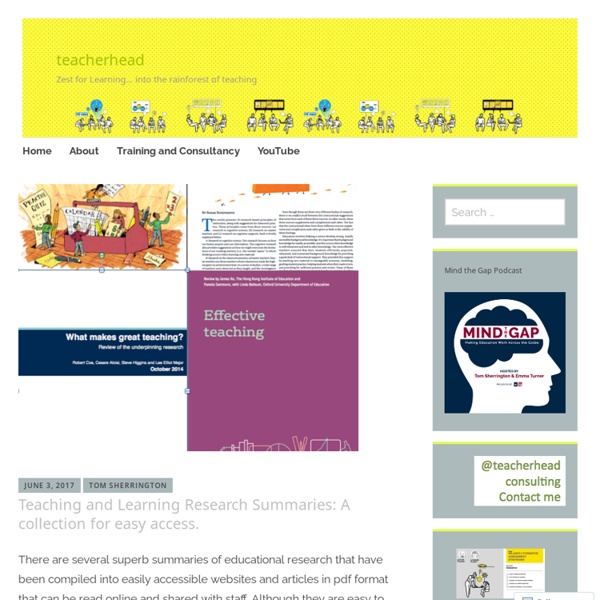#15toptips for Student-Centred Teaching 8: Time is precious, so try to avoid ‘re-inventing the wheel’ by reading about learning and teaching and learning from your colleagues
Sometimes it’s worth reflecting on how many of our colleagues ended up involved in this rather strange world of higher education teaching, since teaching may not, in reality, have been the thing that motivated many to work in the sector. Some of us may have started out very much focused on our research, and have had teaching commitments foisted upon us. Some may have become involved in teaching whilst we were post-graduate research students. This was certainly how I first started teaching – I needed the money and an opportunity to do some teaching part-time on adult education courses provided a good ‘fit’ with my study commitments.
Five Essential Article Reads for Teachers
Below I’ve listed and briefly summarized five articles that, I believe, should be required reading for all teachers. I do not choose the articles lightly and, by no means, is this a comprehensive list. There certainly are other fantastic articles that should be read. Ultimately, I chose these five articles for the following reasons:
Learning in an introductory physics MOOC: All cohorts learn equally, including an on-campus class
Learning in an introductory physics MOOC: All cohorts learn equally, including an on-campus class Kimberly F Colvin, John Champaign, Alwina Liu, Qian Zhou, Colin Fredericks, David E Pritchard Abstract We studied student learning in the MOOC 8.MReV Mechanics ReView, run on the edX.org open source platform.
Organizing Instruction and Study to Improve Student Learning
This guide includes a set of concrete actions relating to the use of instructional and study time that are applicable to subjects that demand a great deal of content learning, including social studies, science, and mathematics. The guide was developed with some of the most important principles to emerge from research on learning and memory in mind. Connect and integrate abstract and concrete representations of concepts. Show More Show Less 5a
Teachers – be careful on Twitter! – ICTEvangelist
Ok, so please excuse the sensationalist title. The thing is, I am a huge advocate for using Twitter for personalised professional development. I’ve written about it many times as you’ll see from this link. With guides to help teachers get started with Twitter and lists of people to connect with and follow, it’s a great place to meet and connect with other educators to support each other. The network after all, is more powerful than the node! One of the biggest challenges that Twitter faces however is the problem of bots.
Terrified of Testing? Tackle It Through Testing!
Paul A. Kirschner & Mirjam Neelen Testing terrifies many students. We call this test anxiety.
Learning Theory.html
<table width=90% cellpadding=10><tr><td bgcolor=ff4447><span><h1>WARNING:</h1><b>JavaScript is turned OFF. None of the links on this concept map will <br />work until it is reactivated. <p><a href=" If you need help turning JavaScript On, click here. </a></p></b></td></tr></table> This Concept Map, created with IHMC CmapTools, has information related to: Learning Theory, zone of proximal development The area of capabilities that learners can exhibit with support from a teacher or peer., organisational learning Nonaka & Takeuchi, Montessori constructivism, Lave & Wenger situated learning, Piaget constructivism, Philosophy Dewey, The church Theology, text & conversation theory An organization is created and defined by communication. communication "is" the organization and the organization exists because communication takes place., Learning Theory Learning Theory v6 is a hypertextual concept map of established learning theories 30th April 2013.
Downloadable Materials
About the six strategies for effective learning resources: These resources were created based on research from cognitive psychology from the past few decades. To learn more about how we created the materials, see this blog.



